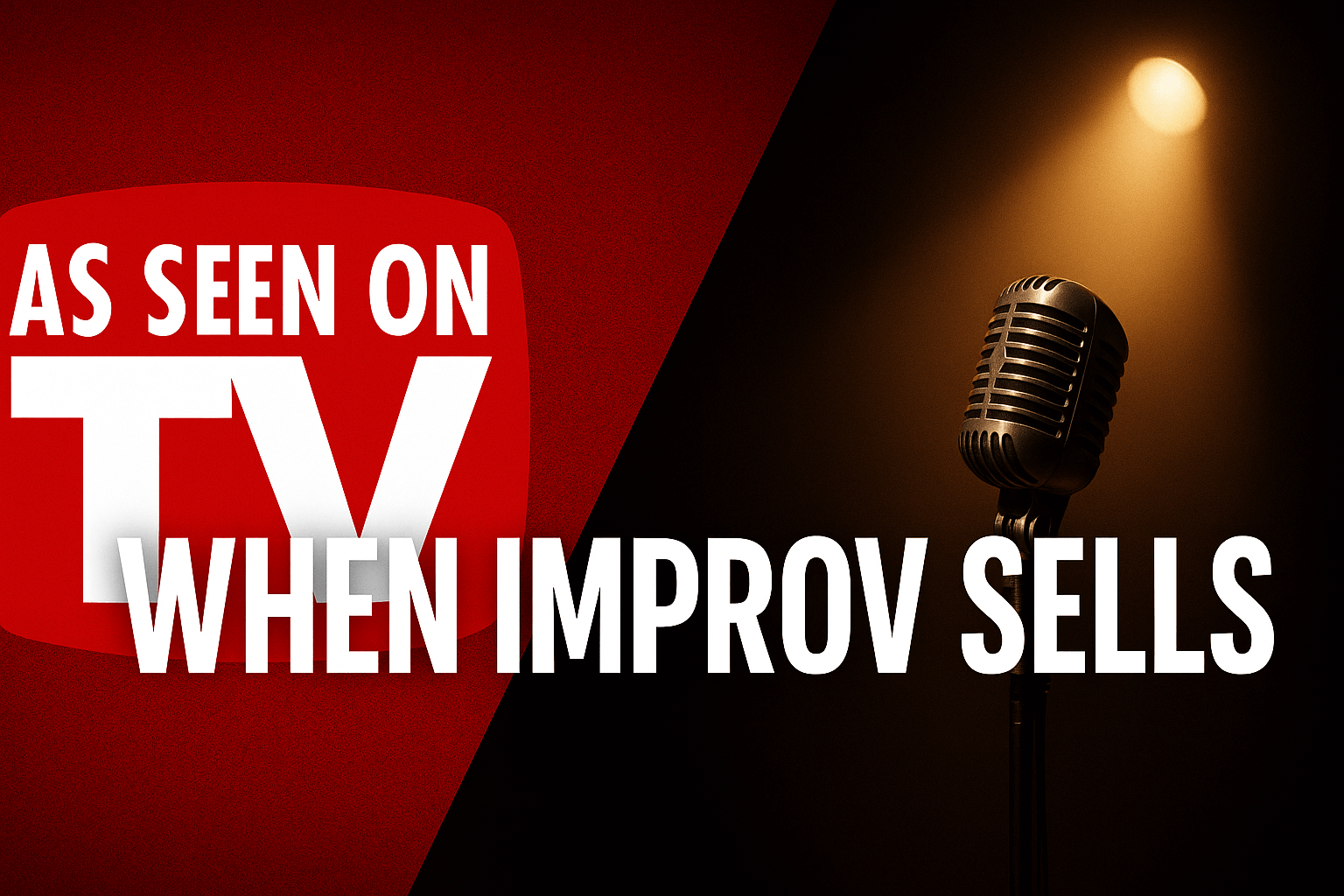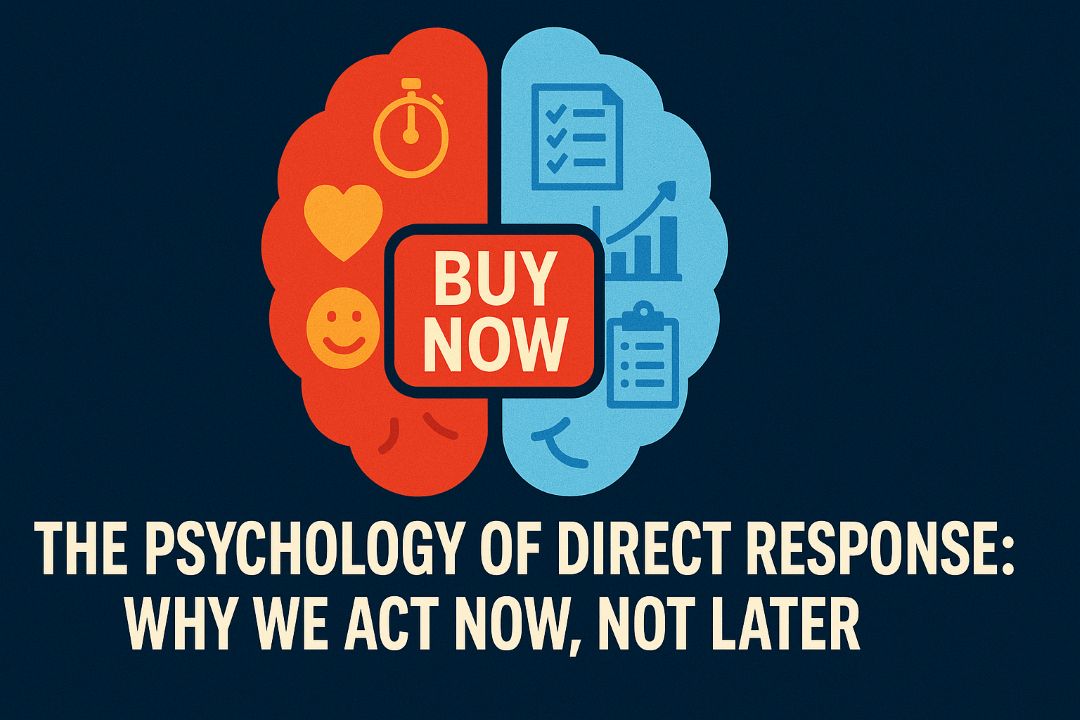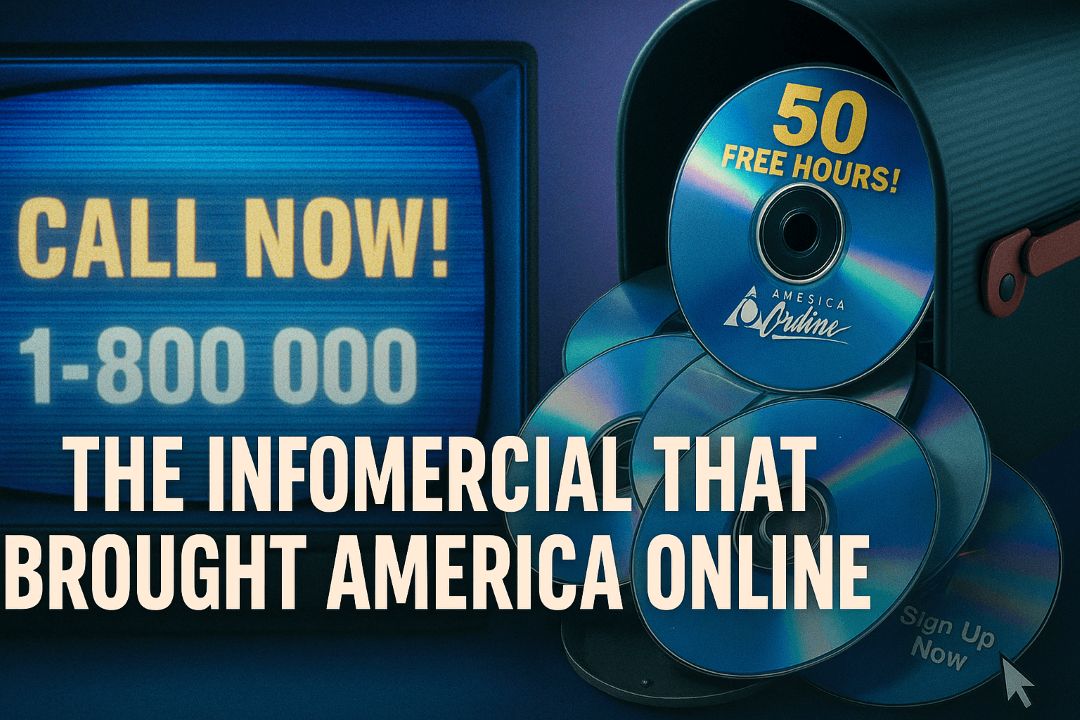If you’ve ever run a true late-night DRTV buy, you know the assignment: hold attention, demonstrate the fix, and make the offer before the audience reaches for the remote—or the fridge. That’s why I love the “Infomercial” game from Whose Line Is It Anyway? It’s comedy, sure, but it’s also an accidental masterclass in direct response.
In this clip, Ryan Stiles and Colin Mochrie take audience suggestions—cellulite cream, diet aids, bad breath, hair removal, acne, snoring—and improvise product pitches using whatever props they find in a box. It’s ridiculous. It’s also a checklist of selling truths we still use in DRTV, social video, and shoppable streams.
Why the Sketch Works Like Great DRTV
1) Immediate problem–solution framing.
The cold open is always the pain point: “It’s 4:00—time to shop. Do you have cellulite? Bad breath? Snoring?” That’s textbook. Define the problem in the first five seconds or lose the viewer.
2) Demonstration is the hero.
They “prove” the fix with visual gags—pea bags, tongue scrapers, suction rigs, “massive sucking.” It’s parody, but it mirrors the golden rule: show, don’t tell. Great infomercials are kinetic: sizzle pans, super-absorbers, stain lifters, posture braces. Demo creates belief.
3) Everyday objects = credible metaphors.
Turning a strainer into a “filter,” a baster into a “precision extractor,” or a tape measure into a “head-sizer” is comedy shorthand for technical features. In DRTV, we do the same with simple, legible props: cutaways, magnified “before/after,” colored water for permeability tests. Simple wins.
4) Time pressure + value anchoring.
The running joke—“It’s 35.95… or twice for 70”—teases classic offer structure: price justification, value stacking, and mild urgency. Modern variant: limited-run bundles, fast-action bonuses, free shipping thresholds. Comedy aside, the cadence sells.
5) Social proof by implication.
“Over 10 satisfied customers.” It’s a laugh line, but the mechanic matters. In real DRTV, we front-load proof drivers: testimonials, expert nods, third-party logos, review counts, and on-screen supers (“1M+ sold”)—all while staying compliant.
6) Objection handling in-scene.
They hit the common “this will hurt,” “it’s expensive,” “it won’t work for me” objections and dispel them with a visual twist. That’s tight copy discipline in disguise: anticipate, neutralize, move on.
7) Memory hooks.
You’ll remember “suction,” the “bad breath indicator,” and that unstoppable “shop-shop-shop” refrain. A DRTV spot lives or dies on recall. Name, jingle, or sticky demo—pick at least one.
10 Bite-Sized Lessons You Can Steal (Without the Wig)
- Lead with the pain. One declarative line that names the problem and the audience.
- Demo in close-up. Macro shots, simple props, one claim per visual.
- Explain why it works. Use metaphors the viewer can repeat at breakfast.
- Stack the offer. Core + bonus + guarantee + urgency (in that order).
- Handle objections out loud. Script the “yeah, but…” moments into the demo.
- Use humor surgically. A smile opens the door; the proof closes the sale.
- Show a path to success. “Week 1… Week 4…” gives structure and believability.
- Signal safety & ease. “Painless,” “minutes a day,” “no tools required.”
- Give the viewer a job. “Call now,” “scan to buy,” “comment ‘DEMO’ for link.”
- Make it immortal. Build a version for 15-sec reels, 60-sec spots, and 2-min landers.
From Stage Gag to Storefront: Applying It Today
- Shoppable video: Run the “problem line” as your first overlay, then pin the product card as the demo starts.
- UGC & creator ads: Hand your talent a “box of props.” Ask for three visual proofs and one “bad metaphor” that makes the science sticky.
- Landing pages: Lead with a looping demo GIF above the fold; reserve your 60-second “full proof” video for mid-page.
- CTV buys: Open with the problem, land the demo, then hit the vanity URL. If you wait to identify the audience, you’re paying for impressions you can’t convert.
My Take as a DRTV Guy
The reason this sketch feels true is because selling live and selling on camera share the same gravity: attention is perishable. The comic exaggeration strips away everything that doesn’t move the viewer from pain → possibility → proof → purchase. That’s the arc. It worked at 3 a.m. in 1999; it works on TikTok Shop at 3 p.m. today.
Roll tape. Make a mess. Clean it up on camera. Then make the offer.











Leave a Reply